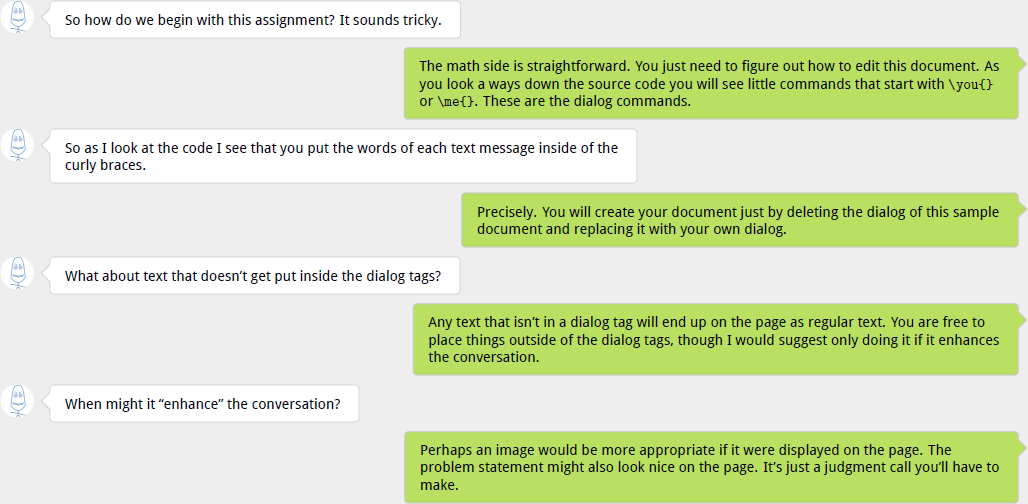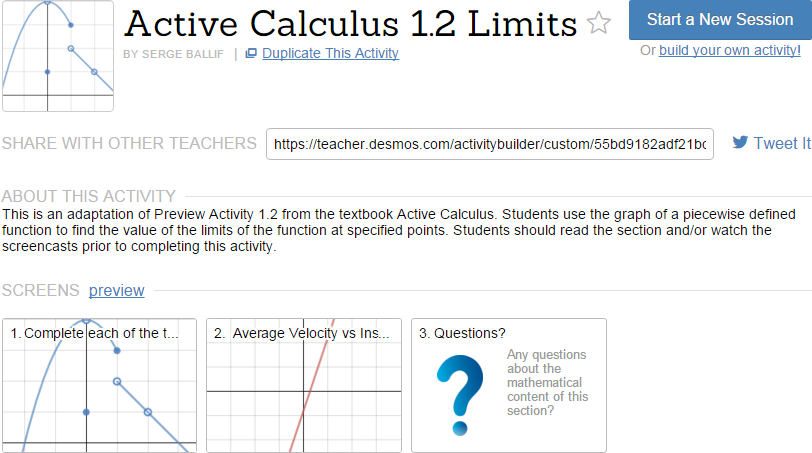Last semester I required my students to create three lessons on important course content. By asking the students to take on the role of teacher I raised the bar for their level of understanding on those three topics. The quickest way to discover where a student is faking it is to ask them to explain their understanding of an idea.
I allowed students to select their own topic from among a list of learning objectives. Some students chose a broad approach, while others zoomed in on a specific idea with specific examples. Overall these teaching items were quite popular, and students did a good job. The tasks were fairly open ended so there was lots of room for creativity.
Texting Lesson
The first teaching item was a texting lesson where students carried out a tutoring session in the format of a phone text.
The submission was typeset using LaTeX at Overleaf. I sent the students to a page with basic setup instructions and then turned them loose. There was definitely a bit of a learning curve here. The LaTeX syntax was new to nearly all of my students, but they caught on quickly. During class I showed them websites that would help them to typeset the math such as mathurl.com or desmos.com. I specifically warned them not to wait until the last minute because they were sure to encounter some technical difficulties along the way. A few students got part way through the work and decided to start over because they couldn’t figure out the errors, but for the most part I had very few complaints. Moreover, several students remarked that this was their favorite assignment of the semester.
Desmos Activity
The second teaching item was to create an learning activity at teacher.desmos.com.
My students had completed many of these activities on their own throughout the semester, so they knew what the possibilities were. However, it is a whole new level of thought that needs to go into creating an active learning lesson. My students did alright on this one, though most of the lessons were fairly generic.
Video Lesson
The third teaching item was to create a video lesson on an important topic from the course. The videos varied greatly in quality and content. Some students did a basic screencast where they worked a few examples. Others filmed a mock tutoring session where one student asked questions while the other explained. Some of the explanations were right on point, and others were vague and showed a lack of understanding. Most of the videos could have been greatly improved just by planning out the dialog in advance. None of the videos would earn any awards. Once again most of the students seemed to appreciate the video lesson teaching item.
Takeaways
The overall feedback was very positive. The grading workload was not terribly onerous, but I will need to plan my time better next time. My students in advanced classes performed surprisingly well. One nice side effect of the teaching items is that I never heard any complaints about the textbook. When students had to make their own explanations, they realized how difficult it could be to explain things in a simple way.
Next time around I plan to require peer reviews for each submission. I didn’t distribute the teaching items as learning material for the rest of the class because it hadn’t been vetted, and most of the content had errors that I didn’t want to disseminate. However, I would have loved to see some more dialog between the students on the things they got out of each activity.



